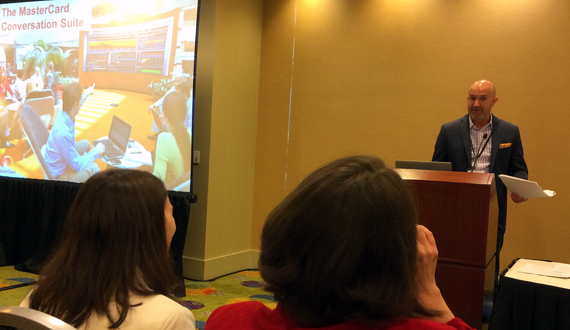Public relations educators meeting in San Francisco this month were reminded that students and professionals work in fragmented media spaces that require new skills and abilities.
Analysts use critical thinking skills, ask questions and use their curiosity, Logan Cullen of Edelman said. A brand strategist understands goals and influencers: "Having that brand strategy mindset is very important because that will take the insights you develop as an analyst and turn those things into actionable recommendations."
Communication researchers must act as psychologist, sociologist or anthropologist in understanding human behavior. "What we're seeing in terms of a dashboard, what we're seeing people talk about, how we're seeing perceptions shift online, in person and through surveys - primary and secondary research - understand the behavioral mindset and how these audiences are shifting and evolving over time," Cullen said.
Sara Hassell, Wells Fargo, added that while the tools may change, research fundamentals do not. "While some of this can be a shiny object around some of the tools," Hassell said, "we really need to harness and focus in on what the objectives are first."
PR campaigns seek to "establish relationships" among "a blend of traditional and new influencers" that "pop up in conversations," Hassell said. "There's also that ripple effect when you might share something and it sparks someone to actually write a story or follow-up with you."
It's more challenging to measure the impact of online relationships and determine what they mean. The key is having a clear objective. "You need to have a North Star when you're thinking about analytics," Hassell told members of the Association for Education in Journalism and Mass Communication (AEJMC) Public Relations Division.
When it comes to social media impressions or engagements, the industry needs to have standard definitions across departments, Hassell said. PR and marketing professionals must be on the same page to tell a clear story about the data.
Brian Gendron, MasterCard, said his company built a space to engage employees at all levels in the data available through their conversation suite, which is a custom social media command center near an employee cafe. "People are coming, they see this, they want to know more about it," Gendron said. "They want to know what we're tracking, they want to see the conversations taking place that are specific to their business lines." The C-suite took note of the social media data through a desktop site, and all MasterCard executives have a mobile app, Gendron said.
"Our CEO can wake up in the morning and take a look at any of the information that's coming through and really drill down into the specifics of our business and the priorities of our business to then see how we are executing against our competitors, and then drill down even further to see what's driving some of the numbers that we have in place."
Research insights should inform marketing, product direction and business, Gendron added. Real-time, hyper-targeted digital data offer the business potential to take immediate action.
Insights should lead brands to activate responses through content in paid, earned, shared and owned media, Michael Brito, W20 Group, said. "Content is that focal point that spreads across those media channels."
Brito said the focus should be on "passion points" of "a particular audience." Social graphics, for example, leads to a specific audience.
Brand strategists have access to sophisticated social media data dashboards and the resources to hone in on key social networks. Targeted, precise content potentially turns social marketing into a series of personalized real-time messages and responses.
When social media engagement evolves into meaningful conversation, brands strengthen relationships with loyal customers and vocal enthusiasts. In other words, we have moved beyond the coolness of measurement tools and returned to critical thinking that generates the right questions and seeks the best answers.

